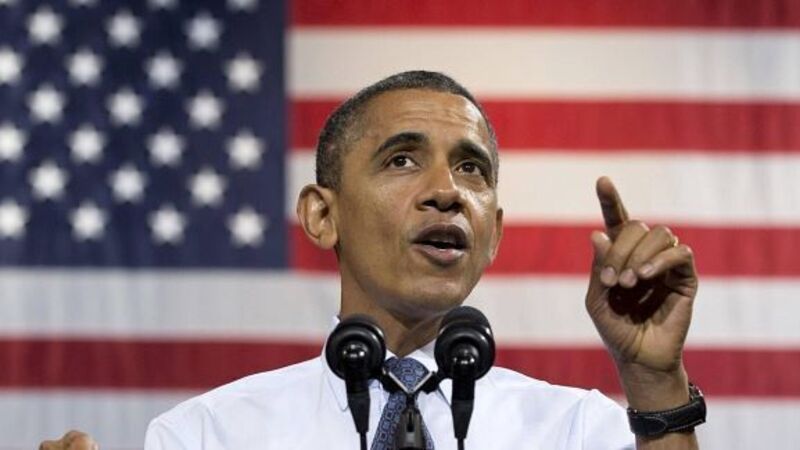Self-sufficient US could weather default

Let it also be said that the US government may be unwilling to pay interest on its multi-trillion dollar publicly-held debt as of mid-October, and that this carries substantial risks. And, finally, let it be said that this is something we should most definitely avoid.
The potential for a default — however self-inflicted — raises the spectre of just about every bad thing economically that you can imagine. And there have been no dearth of voices drawing attention to a variety of doomsday scenarios.
Treasury, which is not normally known for its hyperbole, just issued a report warning of a global economic depression should the US default: interest rates will skyrocket, financial markets will panic, and the global financial system will lose one of its only bastions of predictability and stability.
Five years ago, Lehman Brothers was allowed to fail because of a complacent, erroneous view that its effect would be limited to little more than market disruption. Today, the prospect of a US default is met with the opposite of complacency.
The only voices expressing scepticism that a default would be catastrophic are the very same Tea Party ultras whose ‘burn, baby, burn’ mantra appears to welcome the possibility of an implosion.
There’s ample reason to believe that a default will sever, once and for all, the gossamer threads of trust and stability that sustain not just the US but the global economic system. But it is worth considering that it may not have quite the feared effects, especially because it is such an unprecedented possibility that no one can predict what its outcome might be.
Let’s hypothesise that the next weeks are frittered away as the White House and Congressional Democrats refuse to negotiate on anything until the Republicans allow the government to operate and the Treasury to borrow. Let’s say the drop-dead date of Oct 17 is reached and Treasury finds itself unable, logistically, to prioritise the tens of millions of payments it has due. Imagine it misses an interest payment on the debt, which is the definition of a default. What then?
The speculation is that interest rates will spike dramatically, equity markets will crater, funding markets for daily credit will come under immense strain, and the global financial and commercial system will teeter. That is akin to what happened in autumn 2008, and the concern is that this coming crisis will unfold the same way.
It’s easy to see that happening. Less clear is what comes after and when.
There is just a tad under $12tn (€8.85tn) of debt held by the public, out of nearly $17tn of total US debt. That is a considerable portion of the global bond market, comprising between 10% and 20% of all bonds issued globally.
Some significant portion of that global market is priced relative to the price of US Treasuries, which remain one of the few highly liquid, highly rated, and easily bought and sold instruments of credit.
The size of the market for US bonds is one reason for the high level of concern about what would happen if these supposedly safe and secure instruments were suddenly shown to be not so safe and not so secure. But that size also means that US bonds are not like any other financial instrument.
Faced with a default of a normal bond, investors shy away. They demand to be paid more for higher levels of risk. They sell what they have. Faced with a default of US bonds, however, people are running towards them.
Bond yields have actually fallen in the past weeks, suggesting higher demand. Searching for safety in risky times, investors — and that means not just traders on Wall Street but large asset managers, investment advisers, pension funds, and foreign governments — turn to the one thing that has been safe, US bonds, even as the one thing that looks to be increasingly less safe is US bonds.
Now you could say this is a sign of additional risk, because it flies in the face of common sense. But US bonds are not like any other financial product. They are seen as safe, which is why they are so attractive. That’s a dangerous cliché. The lure of safety is one of the great risks in current financial markets.
Nevertheless, the US remains fully capable of meeting its debt obligations regardless of a default.
What’s going on in the US has nothing to do with insolvency. This would be a default of choice, not of necessity. The reason why US bonds are so attractive may in part be a false sense of security, but it is also a reflection of genuine US economic strength compared to almost anywhere in the world.
The output and consumption of the US is largely not a product of the government, and would not radically change because that government made the rather odd and foolish calculation to default on debts that a small portion of the government does not respect.
Even with a dysfunctional government, it’s a good bet that the US will generate sufficient growth compared to the rest of the world. The amount required to service the debt of the US government is in fact lower than at any point since the 1980s, because interest rates are so low. There is no question that the economic output of the country allows for that debt to be serviced, regardless of whether Washington is functional.
That is why the consequences of a default may not be what we imagine. Because the crisis is purely self-inflicted, the ability of the US to generate sufficient output to meet its obligations would not have been altered.
It is wrong to assume the worst just because the worst is so easy to assume. Tea Party nihilism will lead us nowhere good, but the conviction that the actions of Washington are the primary pivot of both the global financial system and US economic vitality is both incorrect and limiting.
If any good comes from this crisis, the waning of that conviction would be welcome indeed.















